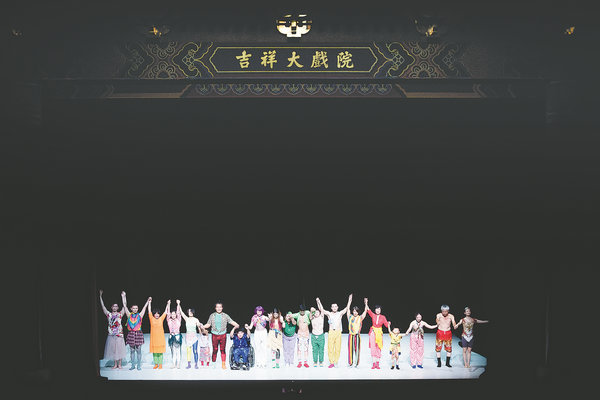

"As someone from the rural area, I have very little social connections and never saw much of the world. For most of my life, to make a living, I've been busy caring for the elderly and children, cooking and doing household chores," Li says.
"But now I get to wear colorful clothing, moonwalking in the style of Michael Jackson and waltzing with a group of talented people, in this theater that I never dared to imagine entering. Although I'm not a professional dancer, I'm genuinely honored and moved."
Gala adopts an unconventional format, with two sections — solo demonstrations of diverse dance styles and 10 group dances, each led by one dancer — separated by a curtain call, in which the dancers come up to the stage one by one.
"The curtain call marks the end of the solo section. It is also a curtain call for each dancer. It's very rare to provide a chance for each performer to command the entire stage. I believe this setting is to highlight each individual, to allow each and every one of the 20 performers to be seen," Xiao says.
The group dances are all chosen and designed by the lead dancers themselves, including the music and choreography. For these excerpts, all other dancers need to imitate the movements and characteristics of the lead dancers.
"Unlike the first part, which showcases each individual, the second part allows the performers to try and become another person, so that they would better understand that person. For example, when a 6-year-old boy leads the dance, the performers need to imagine themselves as 6-year-olds," Xiao says.
"When it comes to some performances, like rhythmic gymnastics presented by a performer, even the professional dancers couldn't keep up. The idea is that, whether you are a professional dancer or not, there are still aspects that challenge you. Each person's dance has unique individual characteristics and cannot be easily replicated."
Chen Xindi, another executive director of the Beijing version, says that in all the productions she has seen, Gala stands out as one with the most dynamic connection with the audience, based on audience reactions.
"It is a contemporary dance piece that exists outside the traditional dance structures. As one audience member commented, just when they thought contemporary dance seemed to be falling into a fixed pattern, this production shattered those expectations, offering a glimpse of a new form."